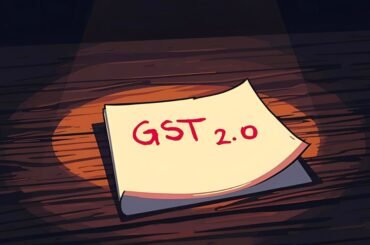Have you ever wondered why two calls on the same stock can cost very different amounts even when strike and underlying are identical?
I explain what an option is and why its lifetime matters. Every contract has a set end, from Weeklys to multi-year LEAPs. That choice shapes the premium, breakeven and the risk I take.
Monthly contracts usually end on the third Friday, and longer horizons raise cost and breakeven prices. For example, XYZ 50 calls might show March $2 (breakeven $52), April $3 ($53) and May $4 ($54).
I watch implied volatility because higher IV inflates premiums ahead of events. I also use delta to gauge the chance of finishing in the money and theta to track daily time decay.
In this article I lay out how I balance time and price, manage money and limit assignment risk so investors trading stocks and derivatives can make clearer, timely decisions.
Foundations: What expiration means for an options contract
Before an option reaches its final day, I treat the period as a clear decision window. I must decide whether to sell, exercise, or let the contract lapse.
Strike, multiplier and the right to act
The strike defines the agreed price at which I buy or sell the underlying asset. Each standard U.S. equity contract represents 100 shares, so a 1.40 premium equals about ₹140 per contract in notional terms.
As a buyer of an American-style option, I can exercise on or before the final day. Calls give me the right to buy; puts let me sell. Many index instruments follow European rules and settle in cash.
Moneyness and value at the finish
Calls are in the money when the stock trades above the strike, out of the money when below. The opposite is true for puts.
| Scenario | Intrinsic value | Time value | Settlement |
|---|---|---|---|
| ITM call | Stock price − strike | Premium − intrinsic | Physical shares (equity) |
| ATM | ≈0 | Mostly time value | Depends on style |
| OTM put | 0 | Entire premium | Often cash for indices |
- I watch how intrinsic value grows as the underlying moves toward the strike.
- I weigh remaining time value before exercising, since time value decays fastest near the end.
How options expire and settle on expiration day
I plan every trade around the final trading cutoffs and settlement rules so I avoid surprises on the last trading day. Knowing whether a contract follows the monthly third friday cadence or a weekly series shapes how I manage exits and rolls.

Monthly, weekly and midweek schedules
Monthly contracts typically follow the third friday convention, while weekly and midweek series expire throughout the month. I mark each expiry on my calendar and note the last trade time for that contract.
AM‑settled versus PM‑settled and print risk
AM‑settled index contracts stop trading Thursday and settle on Friday morning using opening prints. That gap creates print risk: overnight news can move the final settlement price.
PM‑settled contracts trade into the close and settle on the closing value. Most stop trading at 3 p.m. CT; some ETF series run to 3:15 p.m. CT.
Auto‑exercise, DNE and when contracts expire worthless
The OCC auto‑exercises any contract at least $0.01 ITM at 3 p.m. CT. I can submit a Do Not Exercise (DNE) request if I do not want the resulting position.
- I track whether my broker will submit DNE or close positions for margin reasons.
- I watch the auto‑exercise checkpoint to see if contracts will expire worthless when OTM.
- I treat a call option on an underlying stock differently when settlement style changes assignment risk.
How to choose the right expiration date for your strategy
Picking the right expiry window shapes both cost and the chance my trade succeeds. I start by matching my time horizon to the move I expect in the underlying stock, then check how much that extra time will cost me.
Use implied and historical volatility to balance time and price
Higher implied volatility raises option premiums, so I compare current IV to historical volatility. If IV is rich before an earnings or macro event, longer expiries may carry extra cost.
Greeks that matter: delta for probability, theta for time decay
I use delta as a quick proxy for the chance of finishing in the money. Theta tells me how much value an option loses each day.
Probability tools to evaluate breakeven targets across expiration dates
I run probability calculator scenarios with the price underlying and my volatility assumptions. For example, XYZ 50 calls show March $2 (breakeven $52), April $3 ($53) and May $4 ($54), so I see how added time raises breakeven and cost.
- I judge implied vs historical volatility to avoid overpaying for time.
- I compare delta and theta across dates to pick the most efficient contract.
- I test odds to the target stock price and check liquidity for easy exits or rolls.
Managing time decay: Practical ways I handle theta
As the clock winds down, the daily loss in premium picks up speed and demands active management. Theta measures expected daily premium erosion; for long positions it hurts returns, while short positions gain from it.
Understanding the theta curve
The theta curve is not linear. Time value falls slowly at first and then steepens as expiry nears. I watch that curve to size positions and set timelines.
Tactics to reduce time decay drag
- I favour spreads and defined-risk structures when I want directional exposure without large net premium. This offsets time value loss while keeping price exposure.
- I roll earlier rather than wait for the last hours, since liquidity can thin and spreads widen, increasing transaction risk.
- I right-size premium outlay so theta cannot overwhelm my thesis if the stock needs more time to move.
- I take partial profits when price accelerates, shrinking exposure before the fastest phase of decay.
- I avoid holding long premium into low-volatility, sideways markets and prefer strategies that match the expected duration of the move.
Main considerations for the options expiration date
I treat every expiry cluster as a planning cue — it tells me when liquidity and pricing may shift.
Monthly expiries usually cluster on third Fridays, so I map known catalysts around those cycles. That helps me avoid thin markets or last‑minute swings that raise slippage.
I verify contract specs early: American‑style equity contracts settle into physical shares, while many index contracts use European rules and cash settlement. Auto‑exercise and Do Not Exercise (DNE) choices can change outcomes near the finish.
- I check broker cutoff times versus OCC norms to know my true management window.
- I compare price and strike choices across dates to keep breakeven realistic.
- I size positions to limit money at risk and prefer defined‑risk structures when near expiry.
- I plan rolls or exits before spreads widen into the close to reduce execution slippage.
- I confirm deliverables and contract counts to avoid surprises from non‑standard adjustments.
- I account for holidays and weekend settlement that can leave overnight exposure on the underlying stock.
I record these checks in a simple checklist so my decisions reflect a repeatable strategy and not ad‑hoc reactions to last‑hour market noise.
Real-world strategy examples tied to expiration
I show concrete trade examples so you can see how strike choice and time interact in real market conditions.

Buying a call: strike selection, breakeven, and timing
When I buy a call option I pick a strike price that balances delta, cost, and my breakeven. A nearer expiry costs less time but needs a faster move. A later expiry raises the premium and pushes breakeven higher.
For example, XYZ 50 calls might cost ₹2 for March (breakeven ₹52) and ₹4 for May (breakeven ₹54). I use delta and implied volatility to judge the probability the stock price reaches my target in time.
Vertical call spread at expiration: assignment scenarios and outcomes
I often use a long 90 / short 95 vertical to lower my net price and cap upside. If the underlying stock stays below 90, both legs usually expire worthless. Above 95 the spread hits max value.
| Stock range | Outcome | Action |
|---|---|---|
| Below lower strike | Both expire worthless | Loss = premium paid |
| Between strikes | Partial intrinsic value | Close or roll to manage risk |
| Above upper strike | Max spread value | Collect profit; check assignment |
Assignment can be uneven: a Do Not Exercise filed by the short holder might leave me with shares from my long call if it is exercised. I manage that risk by closing or rolling before the cutoffs and watching liquidity near the close.
Risk controls before, during, and after expiration day
Near the finish, small price moves can force big account outcomes. I stay proactive with cash and margin checks so I never wake to an unexpected position or forced sale.
Cash and margin readiness to avoid unwanted positions
I verify available money and margin well before the final trading hour. Exercising a call needs cash or margin capacity to accept shares, and brokers may file a Do Not Exercise or close trades if funds are short.
That check prevents last‑minute liquidations that can turn a measured investment into a costly problem.
Liquidity, widening spreads, and assignment surprises after the close
Liquidity often thins as the market nears 3 p.m. CT and bid/ask spreads widen. I plan exits earlier to avoid paying poor prices or getting stuck with shares if a contract auto‑exercises ITM by $0.01.
- I set alerts for contracts near the money so I can act if an option flips ITM/OTM.
- I confirm broker cutoffs for DNE or exercise instructions to reduce assignment risk.
- I size positions so any shares assignment fits my capital plan or can be unwound quickly.
| Stage | Action | Why it matters |
|---|---|---|
| Pre‑day | Check cash & margin | Avoid forced sales |
| During | Exit early or roll | Reduce poor fill risk |
| Post‑close | Monitor prints | Prevent surprise assignment |
Conclusion
A clear playbook helps turn timing and price choices into repeatable results. I balance time and cost by checking delta and theta, and I price in how volatility shifts premium across expiration choices.
I align strike and strike price with my thesis and use probability tools to test whether the stock or price underlying can reach breakeven before the contract ends. I also respect logistics: auto‑exercise rules, DNE requests, and AM versus PM settlement can change outcomes in the last hour.
Finally, I keep a short checklist—date, expiry mechanics, strike, cash needs and roll plans—so my trades expire on my terms. Investors who plan this way trade with less surprise and more control.




